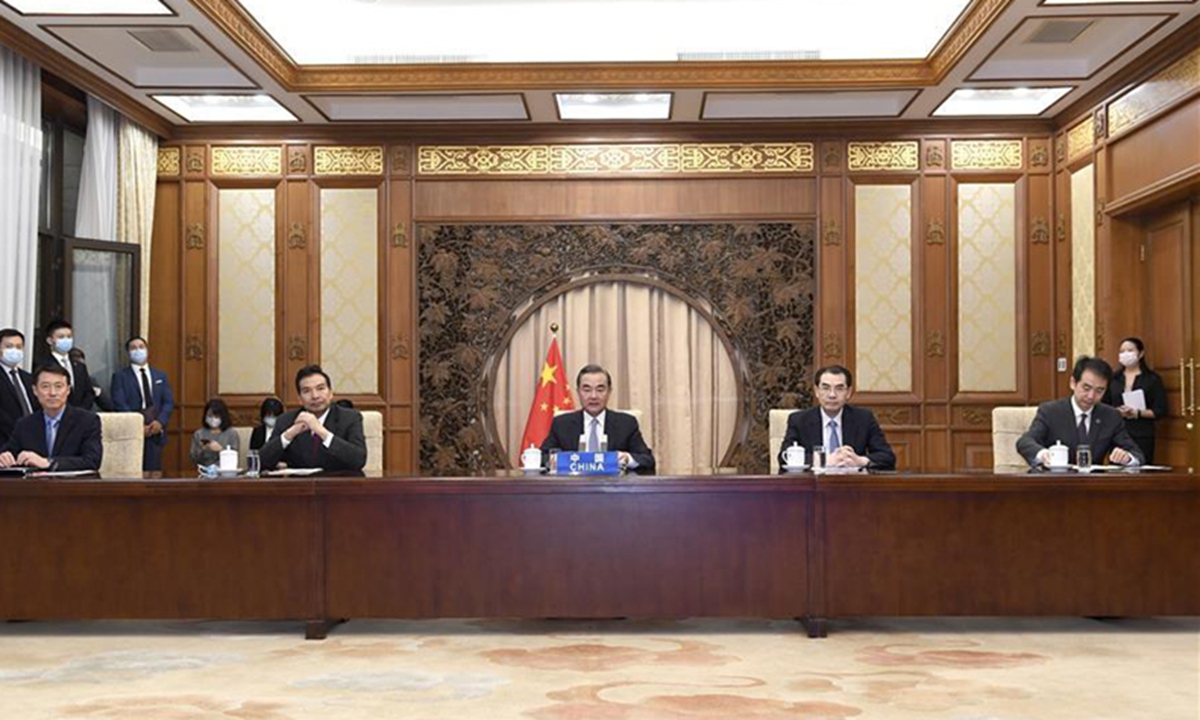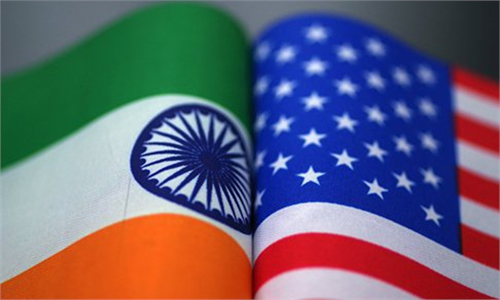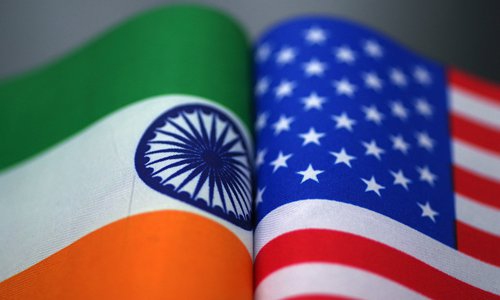
Chinese State Councilor and Foreign Minister Wang Yi hosts a video conference of foreign ministers of China, Afghanistan, Pakistan and Nepal on working together to fight COVID-19 and resume economy, July 27, 2020. Acting Minister of Foreign Affairs of Afghanistan Mohammed Haneef Atmar, Pakistani Foreign Minister Shah Mahmood Qureshi, Pakistani Minister for Economic Affairs Khusro Bakhtyar and Nepali Foreign Minister Pradeep Kumar Gyawali attended the video conference. (Xinhua/Yue Yuewei)
A recent article in the South China Morning Post explores the possibility of China creating its own security bloc, the so-called Himalayan Quad. Citing a former Belarusian diplomat in India, the article argues that recent developments could theoretically "push Beijing to institutionalise the Himalayan Quad project involving China, Nepal, Pakistan, and Afghanistan as a counterweight to the Quad."Some began to hype the "Himalayan Quad" after the video conference of the foreign ministers of the four countries held on July 27 last year. Meanwhile, this is actually a normal mechanism of cooperation between China and its neighbors. According to Chinese Foreign Minister Wang Yi, the main focus of this conference was to strengthen China's cooperation with these countries in collective response to the pandemic, COVID-19 containment and vaccines, as well as post-COVID-19 economic recovery and development. This mechanism has a very promising future, mainly because China and its neighboring countries share weal and woe. China, Nepal, Pakistan and Afghanistan are all developing countries. In addition to the current common task of pandemic prevention and control, all these four countries need to develop their economy and improve people's livelihoods.
The mechanism of cooperation between China and these countries is kept open without any geostrategic and military intentions. On January 6, six countries - China, Nepal, Pakistan, Afghanistan, Sri Lanka and Bangladesh - held the first meeting of director-general level working groups on COVID-19 and poverty alleviation cooperation.
As Chinese Foreign Ministry spokesperson Hua Chunying said, this meeting is "a follow-up step to the video conference of foreign ministers of China, Afghanistan, Pakistan and Nepal on COVID-19 in July and the video conference of vice foreign ministers of China, Pakistan, Nepal, Sri Lanka and Bangladesh on COVID-19 in November 2020."
It is thus clear that the "Himalayan Quad" cooperation mechanism is actually an important part of China's efforts to build a community with a shared future for mankind. This is not at all the same thing as the Quadrilateral Security Dialogue between the US, Japan, India and Australia.
Different from the cooperation between the four Himalayan countries, the Quad is a regional exclusive military-political alliance dominated by a Cold War mentality both in terms of military power and international influence. This kind of small circle will cause regional confrontations and divisions. In fact, it is a certain potential risk to the region.
The Quad's nature decides it has no future. Quad will seek to force countries in the Indo-Pacific region to take sides and then stir up strife in the region. This will be unacceptable to countries in the region, where the wave against the US-led alliance will keep rising. At the same time, the Quad's agenda to contain Beijing will never work as China's rise is inevitable.
Powers like Japan, Australia and India have degraded to act as pawns to maintain the US' global hegemony. To maintain its world hegemony, the US needs an external enemy to rally its allies and partners to cooperate. As a result, since the alliance is led by the US, the search for an external enemy is an inherent flaw of the Quad mechanism. This is against the general trend of global cooperation and development, as well as the principle of multilateralism.
The mechanism of the Quad has created a certain potential danger, or a strategic trap, for these three countries. Under this mechanism, Tokyo, Canberra and New Delhi's autonomy and decision-making power in diplomatic strategy are compromised.
Those who see the cooperation between the four Himalayan countries as a counterweight to Quad probably still harbor a Cold War mentality. China does not seek such confrontations as the US and Soviet Union did during the Cold War. The mechanism of cooperation between the four Himalayan countries was built primarily with a view to facilitate mutually beneficial interaction between China and its neighboring countries. Of course, if China and these countries face threats in areas other than non-traditional security in the future, the four countries may further widen the scope of cooperation between them. Nevertheless, the comparison between the cooperation among the four Himalayan countries and the Quad can make the world understand the difference between real multilateralism and pseudo-multilateralism.
The author is director of the Department for Asia-Pacific Studies at China Institute of International Studies. opinion@globaltimes.com.cn



